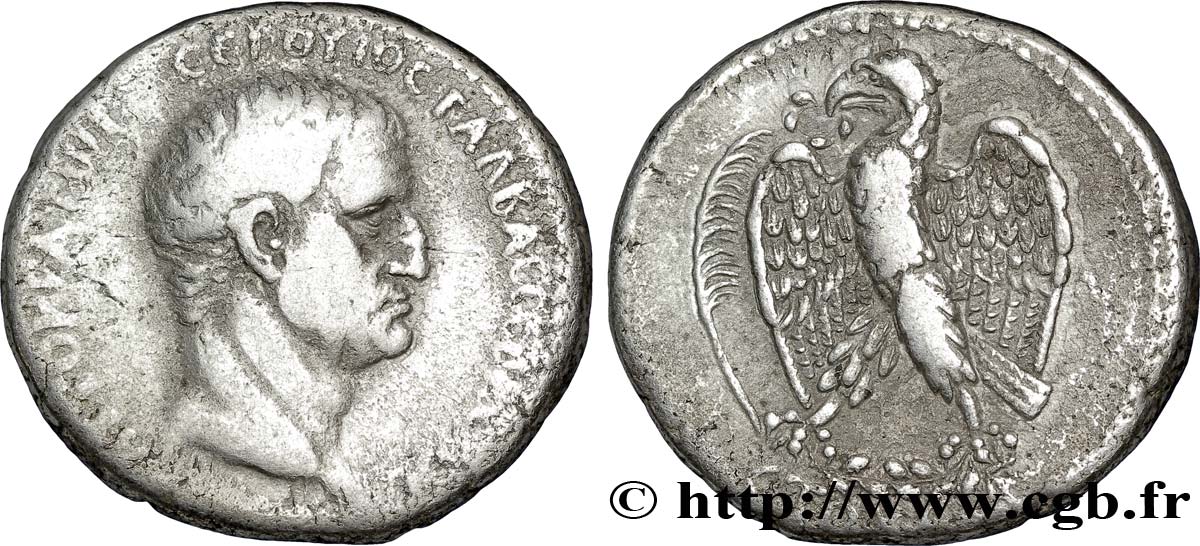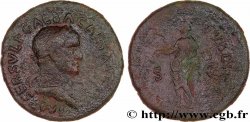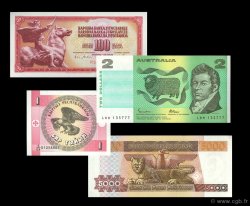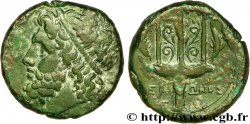bpv_192807 - GALBA Tétradrachme syro-phénicien
Nicht verfügbar.
Artikel auf unserem Online-Shop verkauft (2014)
Preis : 450.00 €
Artikel auf unserem Online-Shop verkauft (2014)
Preis : 450.00 €
Type : Tétradrachme syro-phénicien
Datum: 69
Name der Münzstätte / Stadt : Antioche, Syrie, Séleucie et Piérie
Metall : Silber
Durchmesser : 25 mm
Stempelstellung : 12 h.
Gewicht : 14,49 g.
Kommentare zum Erhaltungszustand:
Flan large et la presque totalité de la légende d’avers lisible, ce qui est rare
N° im Nachschlagewerk :
Pedigree :
Cet exemplaire est le 0099_028, il provient des plateaux de Momi Cohen en 1997 à Tel Aviv
Vorderseite
Beschreibung Vorderseite Tête nue de Galba à droite (O°).
Legende des Averses AUTOKRATwR SEROUIOS GALBAS SEBASTOS
Übersetzung der Vorderseite (L'empereur Servius Galba auguste).
Rückseite
Beschreibung Rückseite Aigle debout à gauche sur une couronne de laurier , les ailes déployées ; dans le champ à gauche, une palme verticale.
Legende des Reverses : ETOUS B
Übersetzung der Rückseite An 2 du règne.
Kommentare
C’est la deuxième variante gravée par le maître pour l’an 2 du règne du type à l’aigle sur la couronne de laurier. Elle diffère de la Prieur 99 par l’omission du praenomen Servius dans la légende du droit et le retour du titre de César. Deux fois plus commune que l’autre, elle semble constituer le gros de l’émission et surtout la plus tardive : c’est cette légende qui clôt les frappes avec l’émission au croissant entre les pattes (Prieur 100A).
À comparer ce portrait avec ceux qui l’ont précédé, on a le sentiment que l’imago officielle a insisté sur un visage de vieux patricien romain, assuré, calme et confiant, bien différent du visage anguleux et militaire de la première année de règne. Remarquons aussi que cette “deuxième année du règne” est assez symbolique : se déclarant en avril 68, Galba fut assassiné le 15 janvier 69. On remarque par ailleurs que les aigles des frappes de ce graveur portent la couronne dans le bec, probablement une distinction accordée à la ville émettrice, contrairement aux aigles du premier graveur. Les sigma sont traités en C. .
This is the second variant engraved by the master for the year 2 of the reign of the type with the eagle on the laurel wreath. It differs from Prior 99 by the omission of the praenomen Servius in the legend of the right and the return of the title of Caesar. Twice as common as the other, it seems to constitute the bulk of the issue and especially the latest: it is this legend which closes the strikes with the issue with the crescent between the paws (Prior 100A). Comparing this portrait with those which preceded it, one has the feeling that the official imago insisted on a face of an old Roman patrician, assured, calm and confident, very different from the angular and military face of the first year of the reign. Let us also note that this “second year of the reign” is quite symbolic: declaring himself in April 68, Galba was assassinated on January 15, 69. We also note that the eagles of this engraver’s strikes bear the crown in their beaks, probably a distinction granted to the issuing city, unlike the eagles of the first engraver. The sigmas are treated in C.
À comparer ce portrait avec ceux qui l’ont précédé, on a le sentiment que l’imago officielle a insisté sur un visage de vieux patricien romain, assuré, calme et confiant, bien différent du visage anguleux et militaire de la première année de règne. Remarquons aussi que cette “deuxième année du règne” est assez symbolique : se déclarant en avril 68, Galba fut assassiné le 15 janvier 69. On remarque par ailleurs que les aigles des frappes de ce graveur portent la couronne dans le bec, probablement une distinction accordée à la ville émettrice, contrairement aux aigles du premier graveur. Les sigma sont traités en C. .
This is the second variant engraved by the master for the year 2 of the reign of the type with the eagle on the laurel wreath. It differs from Prior 99 by the omission of the praenomen Servius in the legend of the right and the return of the title of Caesar. Twice as common as the other, it seems to constitute the bulk of the issue and especially the latest: it is this legend which closes the strikes with the issue with the crescent between the paws (Prior 100A). Comparing this portrait with those which preceded it, one has the feeling that the official imago insisted on a face of an old Roman patrician, assured, calm and confident, very different from the angular and military face of the first year of the reign. Let us also note that this “second year of the reign” is quite symbolic: declaring himself in April 68, Galba was assassinated on January 15, 69. We also note that the eagles of this engraver’s strikes bear the crown in their beaks, probably a distinction granted to the issuing city, unlike the eagles of the first engraver. The sigmas are treated in C.








 Berichten über einen Fehler
Berichten über einen Fehler Die Seite drucken
Die Seite drucken Teilen meiner Auswahl
Teilen meiner Auswahl Stellen Sie eine Frage
Stellen Sie eine Frage Einlieferung/Verkauf
Einlieferung/Verkauf
 Details
Details















